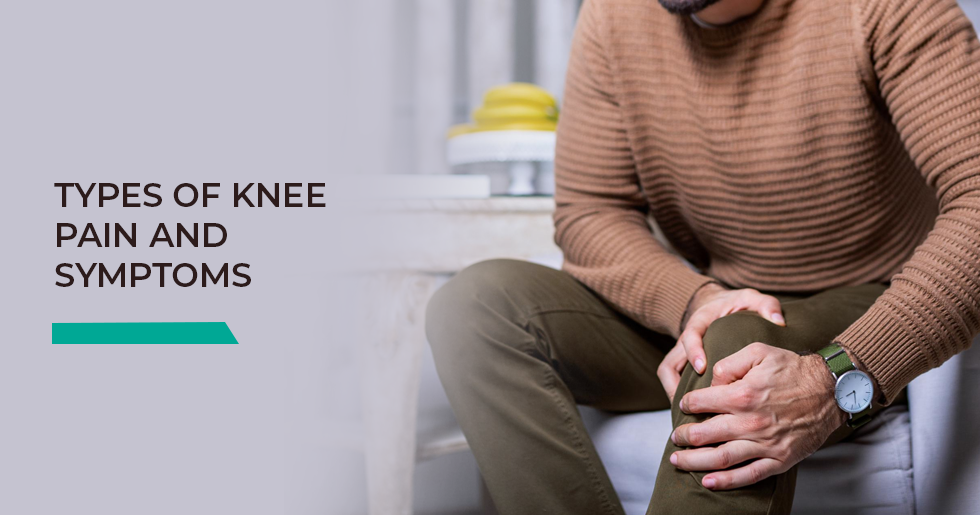The knee is one of the hardest-working joints in the body. It absorbs force, enables movement, and supports every twist, squat, and step. When pain begins to creep in, daily tasks—from climbing stairs to standing up—can become challenging. Understanding types of knee pain and symptoms helps pinpoint the cause and guide the path to relief.
Not all knee pain is created equal. Some develop gradually, others arrive suddenly. The location, intensity, and accompanying sensations all hold clues. Recognising patterns is the first step toward choosing the right physical, therapeutic, or medical support system.
Types of Knee Pain
Pain in the knee isn’t always where the problem began. Depending on which part of the knee hurts, the reason and remedy may vary.
Front Knee Pain
This is commonly experienced just below or around the kneecap. Often linked to overuse or misalignment, it’s frequent in runners or those who climb stairs regularly. Conditions like patellofemoral syndrome or tendon inflammation fall into this category. The pain may be dull or sharp, aggravated by squatting or prolonged sitting.
Back Knee Pain
Pain behind the knee often suggests strain in the hamstring or calf tendons. In some cases, it may involve fluid build-up known as a Baker’s cyst. The discomfort might radiate downward, particularly when the leg is fully extended. It’s more than an ache—it can feel tight, like the joint resists movement.
Inner Knee Pain
Pain on the inner (medial) side usually points towards damage in the ligaments or cartilage. For instance, a strained medial collateral ligament from a side impact or degenerative wear on the inner meniscus. It can present as a sharp jab or a lingering ache when walking or pivoting.
Outer Knee Pain
Pain on the lateral side often originates in the iliotibial band or outer meniscus. It’s common in cyclists or runners with poor alignment. Some describe it as a burning line that starts outside the knee and travels up the thigh. It worsens with repetitive movements or downhill walking.
Understanding these variations allows individuals to explain their pain better and seek support from a specialised care provider, such as a knee pain specialist in Chennai, who understands both anatomical detail and patient lifestyle.
Symptoms of Knee Pain
While pain is the most obvious signal, the body communicates in many more subtle ways. Looking closely at the symptoms can help distinguish between temporary soreness and conditions needing expert intervention.
Swelling and Redness
Inflammation is the body’s immediate response to injury. Swelling may appear quickly after impact or build gradually over days. Redness indicates increased blood flow, often due to irritation inside the joint. It’s important not to ignore these visual cues. They may appear mild, but oftentimes mark the beginning of a deeper issue.
Stiffness and Limited Movement
A knee that refuses to bend or straighten without effort is asking for attention. Morning stiffness, or difficulty after long periods of rest, could hint at joint degeneration or inflammation. Stiffness tends to rob mobility before pain sets in, making it an early sign worth watching.
Popping or Clicking Sounds
While occasional clicks are harmless, consistent or painful popping might indicate something more serious. It could be due to cartilage wear, ligament snapping over bone, or air bubbles in joint fluid. If noise is accompanied by discomfort, especially during motion, it’s wise to consult a professional.
Weakness or Instability
When the knee falters—buckling mid-step or slipping during turns—it signals instability. Ligament wear, muscle loss, or nerve issues may be at play. At Epione, a trusted pain clinic in Chennai, recovery centres on non-surgical care that rebuilds strength and restores balance.
Sharp or Dull Pain
Pain can be sudden and piercing, or slow and persistent. Each quality offers clues. Sharp pain might point to ligament tears or bone spurs, while dull aches could stem from repetitive stress or early arthritis. Monitoring when pain appears—during activity, rest, or cold weather—helps in accurate diagnosis.
Early signs are easy to ignore. But knees rarely recover quietly. The best treatment for knee pain starts with finding the cause and shaping a plan built to last.
Conclusion:
Knee pain doesn’t always roar. Sometimes, it whispers through tightness in the morning, a clicking sound during a workout, or a limp that grows worse. Asking what are the symptoms of knee pain is no longer about identifying the discomfort—it’s about listening to the body when it speaks softly.
At Epione, a trusted pain management clinic in Chennai, care begins with understanding. Treatments involve postural correction, muscle reconditioning, and therapeutic methods such as dry needling, joint mobilisation, or guided physiotherapy. It’s a far cry from quick fixes. The aim is resilience, not reaction.
With access to a skilled pain management doctor in Chennai, individuals can return to movement confidently, knowing their knees aren’t just being treated—they’re being respected.

